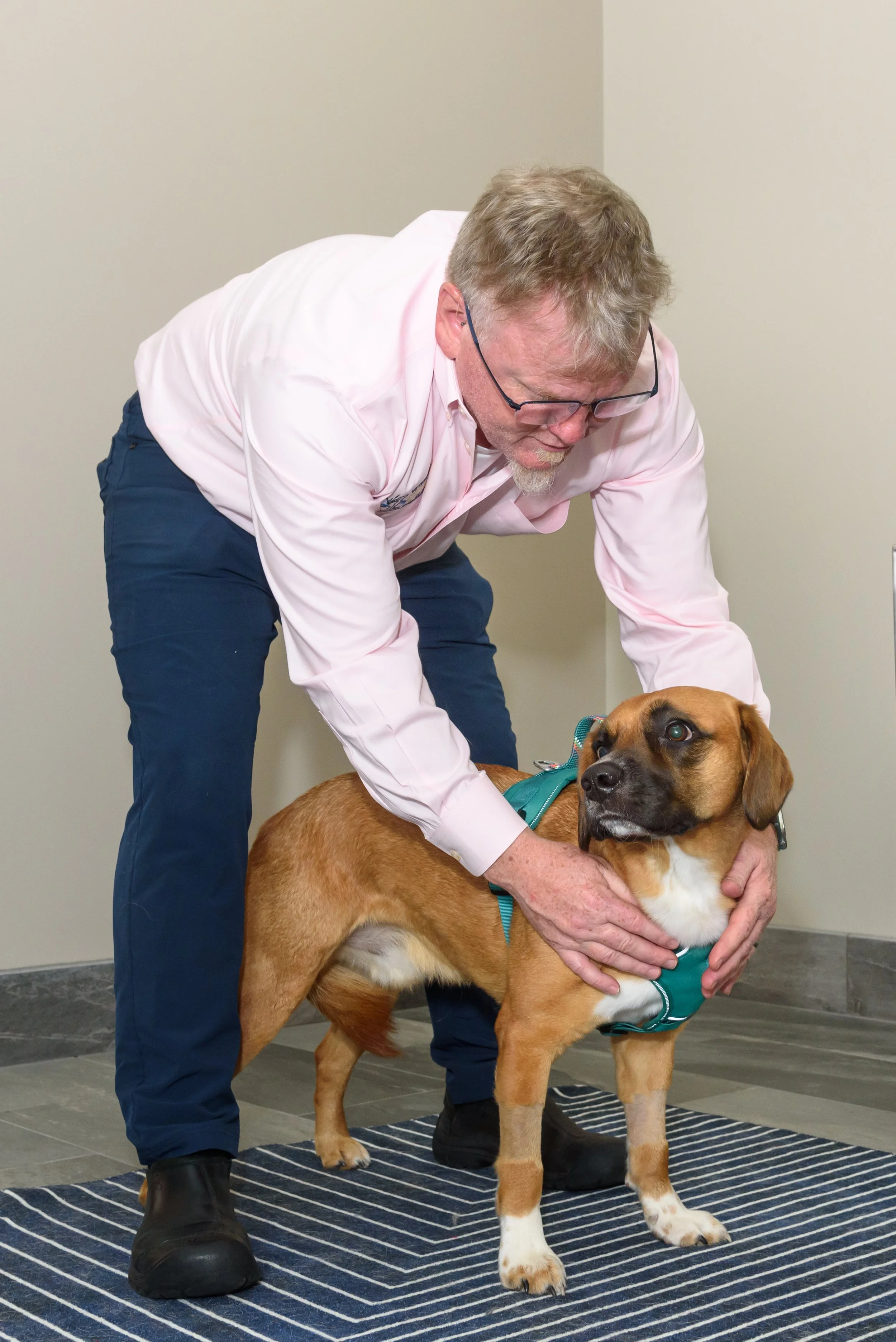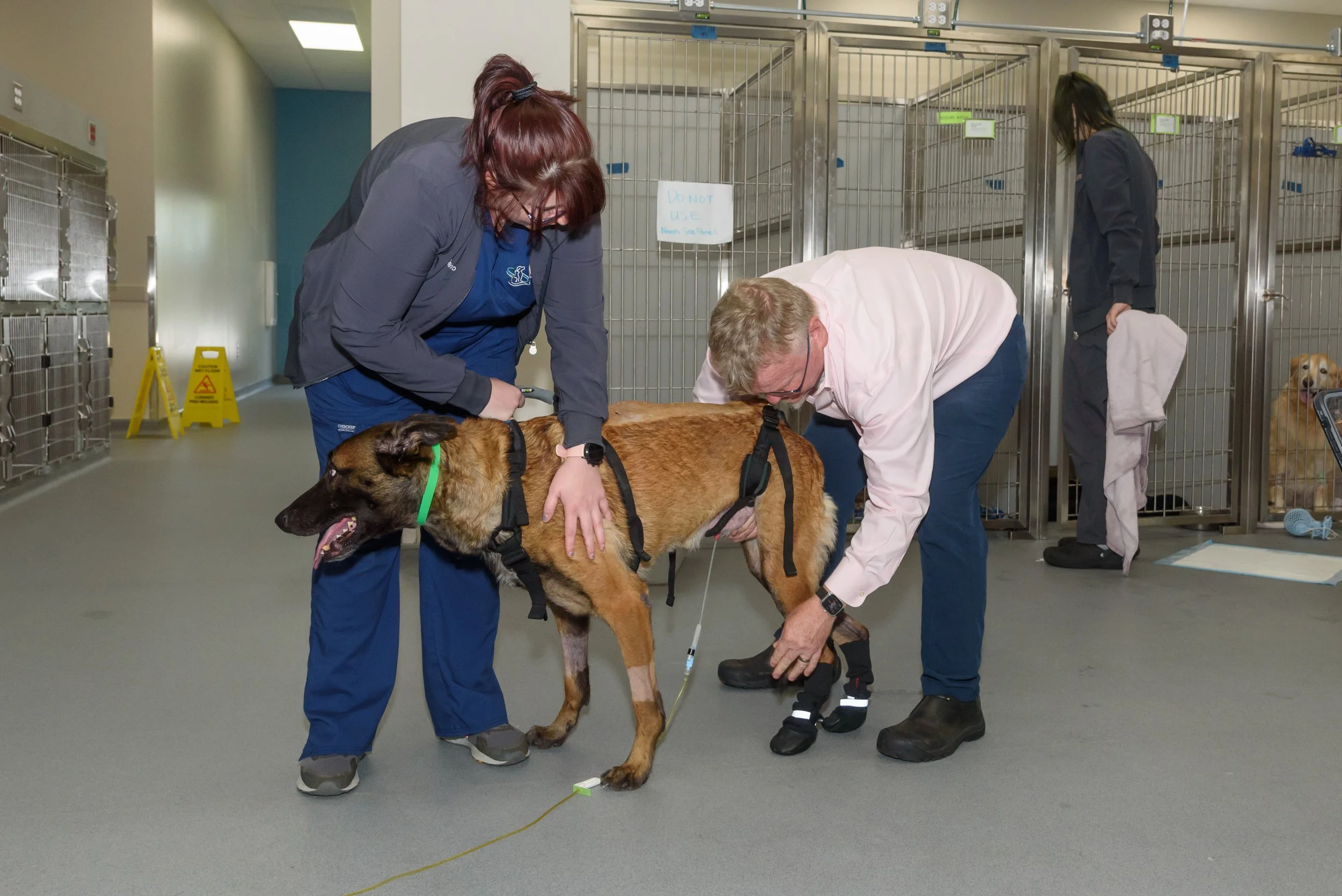
Tackling Sudden Paralysis in Dogs
Comprehensive Care and Support
Symptoms to Look Out For If your pet shows any of the following symptoms listed below, please contact us or your closest emergency hospital
● Severe back pain
● Weak or wobbly gait
● Knuckling paws
● Dragging legs
● Inability to stand or walk
● Urinary or fecal incontinence
Time is of the essence - many causes of paralysis can be successfully treated if addressed immediately.
Please note that VNIoC is not an emergency service, but we do partner with the Pet-ER. If your pet is experiencing an emergency outside of our regular clinic hours (after 6pm on weekdays or over the weekend), call 410-252-8387, or your closest veterinary emergency hospital.
Understanding Sudden Paralysis
Sudden paralysis is the complete absence of voluntary motor ability. It is a distressing and unexpected condition, and recognizing the early signs is crucial for timely care. Potential causes include Intervertebral Disk Disease (IVDD), infections, trauma, and tick-borne disease.
The most common cause of acute painful paralysis is intervertebral disk disease, or IVDD. This is rare in cats but affects many young to middle-aged toy and chondrodystrophic breeds (dogs with a long body and short legs) such as dachshunds, beagles, poodles, french bulldogs, cocker spaniels, and pekingese.
IVDD Symptoms
Clinical signs vary from mild back pain, to unrelenting pain and discomfort, all the way to complete paralysis with absent sensation of feeling/pain in the limbs. Sudden onset of back pain with or without neurologic deficits (most commonly dragging of the rear limbs, ataxia (unsteadiness/wobbliness), and/or scuffing while walking) is the most common presentation.
Luna presented to VNIoC in January unable to use her back legs. She was diagnosed and treated for a ruptured disk at T12-13. She had a complete recovery and came prancing in for a recheck 2 weeks later.
Diagnosing IVDD
Diagnosis is by our neurological exam and advanced spinal imaging such as magnetic resonance imaging (MRI) or computed tomography (CT). Other diagnostics employed may include radiographs (X-Rays) and cerebrospinal fluid analysis.
What is my pets prognosis? Will my dog be able to walk again?
There are many factors involved in providing a prognosis for paralyzed pets. Dogs and cats with weakness in their back legs from IVDD can have an excellent chance for returning to normal function. Even paralyzed pets that are seen and treated promptly have a very good chance to walk again pain-free.
If your dog or cat develops sudden paralysis, seeing a veterinary neurologist or emergency doctor will increase their chances of a positive outcome.

Make an Appointment
Witnessing any of these symptoms in your dog? Schedule an appointment with our veterinary specialists for a comprehensive evaluation and to discuss the best treatment options for your pet’s condition.
Living with Paralysis
Adapting to your dog’s paralysis requires patience and specialized care. We provide resources and tips to help you modify your home, manage their daily needs, and maintain their comfort and wellbeing.
Expert Help and Support
Our team of veterinary specialists offers personalized guidance and support throughout your pet’s recovery journey. We are dedicated to discussing the most effective treatment options and providing comprehensive rehabilitation advice.
Prevention and Ongoing Care
Discover preventive measures such as regular check-ups, effective tick prevention, promoting safe play, and maintaining optimal weight to protect your dog’s health and prevent potential causes of paralysis





